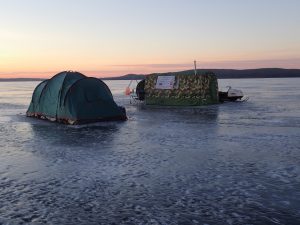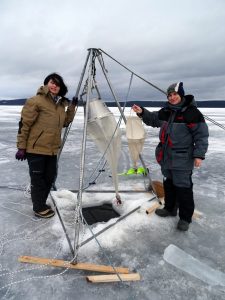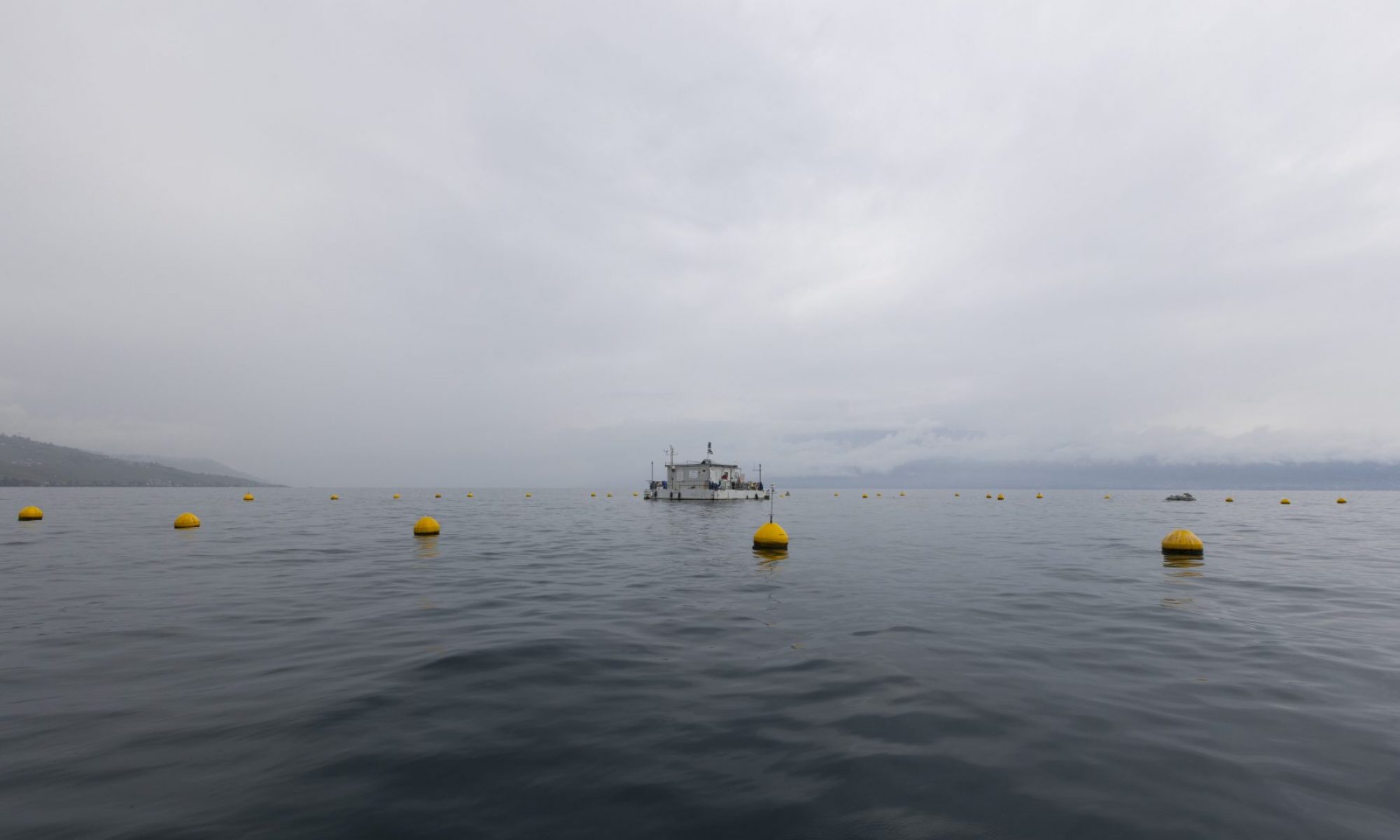
Ice Camp on Lake Onego, March 2016
There is a clear lack of knowledge about what is happening under the ice of lakes in winter. In the group, we conduct collaborative projects whereby we study the insofar dynamics under the ice of lakes.
Oxygen under the ice
For high-altitude lakes, supposingly poorly productive, the bottom oxygen depletion under the ice can be very variable, from very slow to very fast. Some of those lakes can reach bottom anoxia in a couple of weeks. We study the processes explaining such a high variability… and guess what? it is not linked to respiration…
see: M.E Perga, C. Minaudo, T. Doda F. Arthaud, H. Beria, H.E. Chmiel, N. Escoffier, T. Lambert, R. Napolleoni, B. Obrador, P. Perolo, J. Rüegg, H.N. Ulloa, D. Bouffard (2023). Near-bed stratification controls bottom hypoxia in ice-covered alpine lakes. Limnology and Oceanography. https://doi.org/10.1002/lno.12341

Food webs
Since most of the observation of under-ice life to date has been done in polar, snow-covered lakes, attention has been essentially given to heterotrophic and mixotrophic processes by which energy flows are maintained in darkness. However, wind can sweep off the snow from the surface of large ice-covered lakes. The resulting clear-ice can allow as much as 95% PAR transmission, therefore fuelling substantial primary productivity in winter, similarly to the situation classically observed during Arctic and Antarctic interseasons. In oceans, ice-associated (sympagic) and pelagic autotrophic production under transparent ice has been repeatedly shown to exert a crucial role not only as a food source for over-wintering zooplankton, but also as a crucial supplier of essential nutrients from which secondary consumers benefit all over the ice-free season. Such results emphasize how climate change might ultimately threaten the plankton phenology, the whole energy flow and secondary production within cold oceans.
Freshwater science clearly lags behind and, to our knowledge, very few studies have addressed the diversity of zooplankton over-wintering strategies in ice-covered lakes, while the contribution and role of sympagic and pelagic primary production in winter within zooplankton food webs is virtually unknown. In this work, we quantified zooplankton diversity and migration diurnal strategies under the ice of lake Onego and unravel the energy flow within under-ice food web and the diversity of feeding trade-offs within different zooplankton taxa and stages.
Chasing zooplankton under ice with Maria Syarki, the zooplanktonologist from the Northern Water Problems Institute, Petrozavosk, Russia.
See:
Perga, M.-E., Syarki, M., Spangenberg, J. E., Frossard, V., Lyautey, E., Kalinkina, N., & Bouffard, D. (2021). Fasting or feeding: A planktonic food web under lake ice. Freshwater Biology, 66(3), 570-581. doi:https://doi.org/10.1111/fwb.13661
Perga, M. E., M. Syarki, N. Kalinkina and D. Bouffard (2020). “A rotiferan version of the punishment of Sisyphus?” Ecology 101(3): e02934.
Perga, M. E., M. Syarki, N. Kalinkina and D. Bouffard (2020). “A rotiferan version of the punishment of Sisyphus?” Ecology 101(3): e02934.
